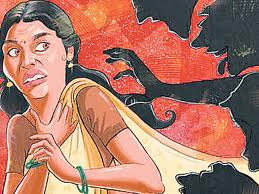In the mother’s womb or at school, in colleges or workplaces, on streets or within the safe walls of her house, illiterate or literate, married or unmarried, young or old, it is the women who are victimized either by others or by her own people. And, in the name of family and society, it is the women who opt to sigh and brood rather than speaking out, allowing others to gain control over their lives.
March 8 is observed as Women’s Day across the world. This is a day everyone bows down to the various faces of woman and her innate strength. She is a grandmother, a mother, a sister, a daughter, a wife. She is a doctor, an engineer, a teacher, a conductor, an auto driver and also a home-maker- to be precise, many roles played by one person.
Even while changes have taken place in the country over the past few years, things on the social and economic front have largely remained unchanged for women. They somehow still continue to be subjugated, suppressed and marginalized classes most of the time irrespective of their personal status. Over the last five years, Government statistics show an alarming rise in crimes against women.
The coastal districts of Karnataka too have witnessed a spate of crimes against women, ranging from moral policing to sexual assault and murder. Even in the era of globalisation, women are largely treated as objects to be used and manipulated. Considered as soft targets, it is mostly the women and young girls who are picked on and victimised by wrong-doers in the name of culture and morality.
The self-acclaimed moral police, or the ‘immoral’ police as they should be rightly called, object to youngsters utilising their freedom and assault them in the name of culture, which has resulted in youngsters, especially girls, being afraid to venture out with friends and associates. Inaction on the party of police has only fuelled such crime against women.
In the most recent case in Dakshina Kananda district, a 22-year-old girl was killed in broad daylight by a man as a result of having repeatedly spurned his sexual advances. While the perpetrators of serious offences such as murder and rape need to be severely punished, attempts to outrage the modesty of women such as eve-teasing, stalking, voyeurism, indecent gestures and sexual harassment at workplaces also need to be dealt with a serious note.
The brutal gang-rape of a student in Delhi showed the cruelty and insensitivity of the ways women are treated with. Even after huge outrage against such an inhuman crime, the rate of sexual assault on women and girls continue to rise, as though the criminals are challenging the Government clear and loud saying ‘do what you can but we will not stop.’
This women’s day it is time the society came forth to resolve that women will be treated as human beings and not as children of lesser gods. This is the day for the society to pledge that no girl will be killed in the name of honour, religion, culture and most importantly because of her gender. This is the day all women take a pledge to fight back for their dignity and justice breaking silence and episodes of brooding within four walls. This is the day to call for change.






Comments
Add new comment